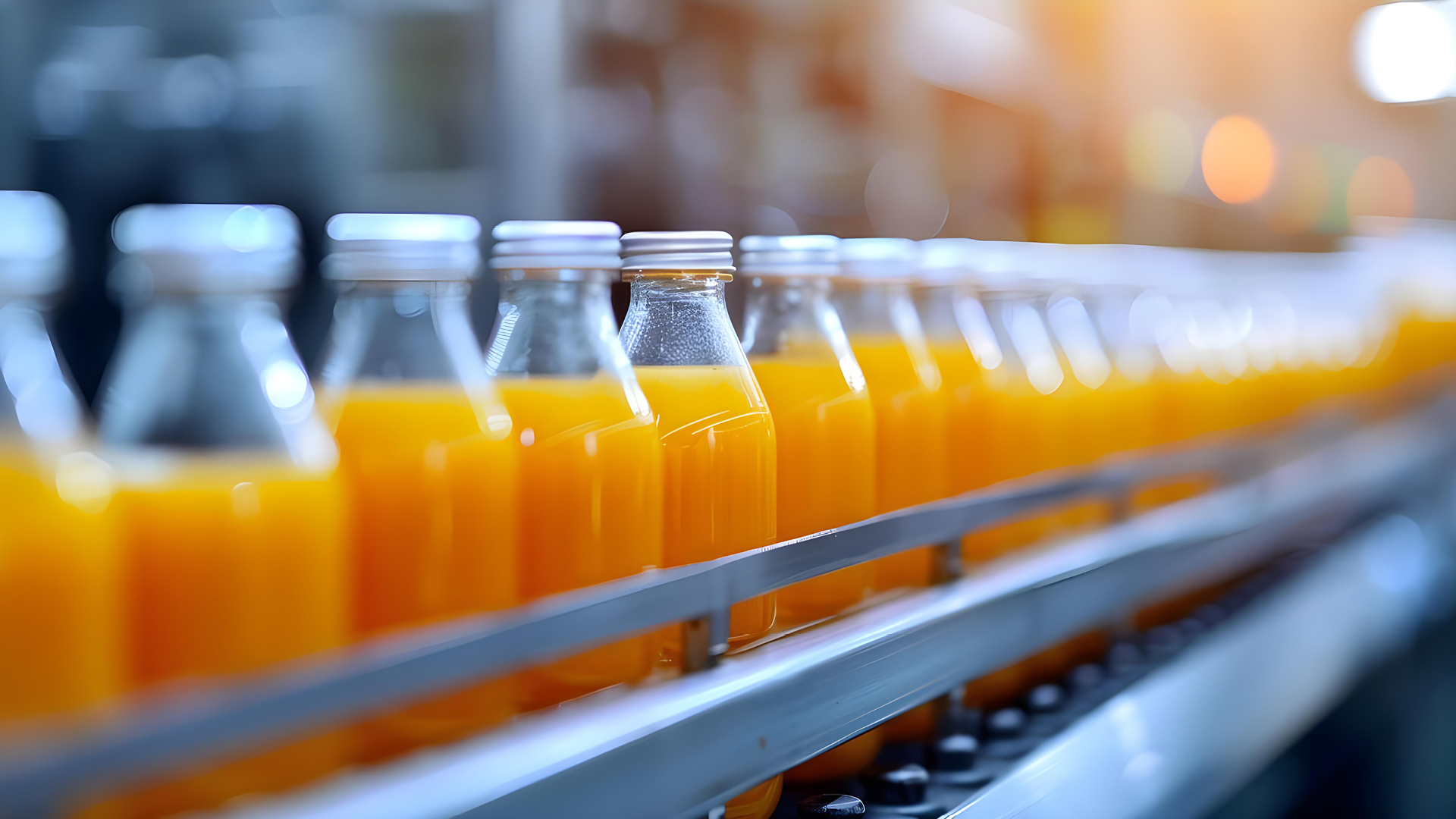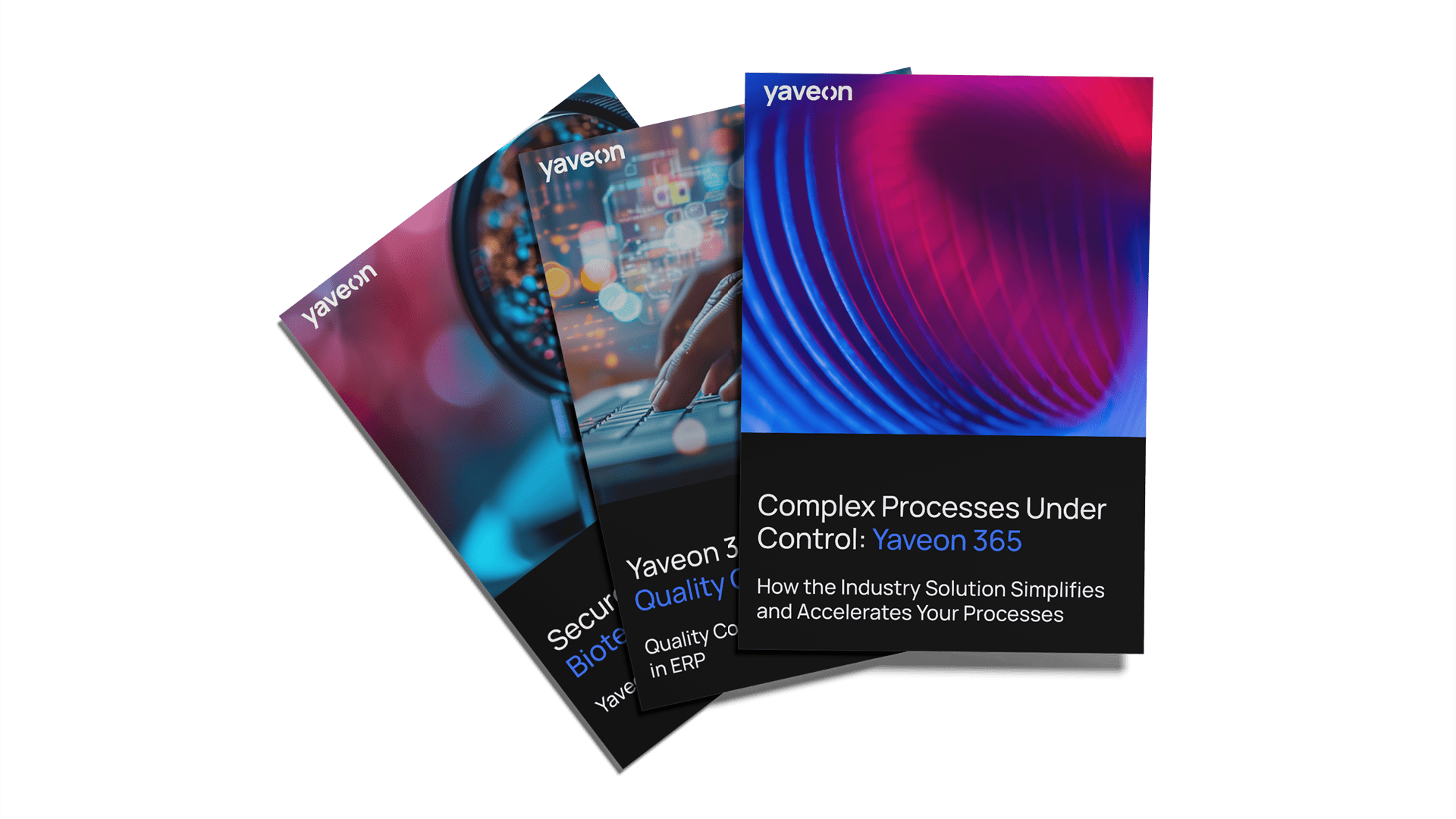Traceability means being able to track food throughout its entire life cycle. We explain how you can guarantee this.

Summary: Digital Transformation has fundamentally reshaped the food industry. Especially since the COVID-19 pandemic, flexible digital processes have become indispensable – enabling location-independent collaboration and stabilizing workflows. They help food companies work efficiently and respond to changing consumer habits such as the rise of online shopping. With effective ERP strategies, businesses can secure and strengthen their position in the food retail sector.
Digital processes have been shaping the food industry for many years. But the topic became truly prominent with the onset of the COVID-19 pandemic. When, almost overnight in 2020, remote work became mandatory, supply chains collapsed, and entire workforces were out of action, companies had to react quickly. Only those who were flexible enough to adapt remained operational. The solution lay in digital processes – independent of location and designed to keep workflows running anywhere.
At the same time, consumer habits shifted. More and more people began ordering food online. Buying behavior has steadily moved toward digital channels in recent years. While traditional retail always involved intermediaries, purchases now often happen directly between manufacturer and consumer. As a result, providers are increasingly expected to build engaging online shops that meet new customer expectations.
Another strong trend in the food sector is sustainability. Consumers are questioning the origins of products and placing higher value on clean, transparent ingredients. For food manufacturers, this creates pressure to bring innovative products to market that reflect these values. Waiting too long is risky – competitors will seize the opportunity.
Digital technologies provide insights and data that were previously unavailable. Companies use them as a foundation to modernize production environments and optimize collaboration between people, machines, and processes.
Digital Transformation brings deep change to nearly every area of the food industry. But one aspect stands out: efficient and transparent batch management. In a sector that is constantly evolving, end-to-end product traceability is not only a regulatory requirement – it is also a decisive competitive advantage.

Given the speed at which circumstances change, the question inevitably arises: will the new mechanisms remain, or will they soon be a thing of the past? The answer: while trends in the food industry evolve – and no one can predict what will be “in” tomorrow – the digital structures established in recent years are here to stay.
Why? Because they are solid, embedded, and indispensable. One example: during the lockdown, countless retailers launched online shops that were – and still are – heavily used. Shutting them down again? Out of the question. After all, the competition never sleeps. Those who think ahead invest in a well-designed digital transformation strategy – securing long-term benefits and a future-proof position in the market.
From small tools to complete software systems – there are many ways to establish digital processes in food companies. At the heart of it all are key technologies. Typical examples include:
Working in the cloud is an essential part of digital transformation in the food industry. It forms the foundation for innovative technologies such as machine learning and big data. At the same time, it allows companies to access data regardless of location and respond flexibly from anywhere.
Another benefit: scalability. Food companies that rely on cloud computing are not tied to rigid structures. More users today, fewer tomorrow? No problem – the cloud adapts to your needs.
Robots provide enormous value in food production. They take over repetitive or hazardous tasks, making everyday work easier for employees. Collaborative robots, or “cobots,” even work hand in hand with people – combining the best of both worlds.
At the same time, food companies can also rely on software robots through robotic process automation (RPA), which automates manual administrative tasks efficiently.
More efficient processes, data-driven decision-making, and the ability to anticipate consumer preferences – that’s what Industry 4.0 enables. It supports manufacturing and offers huge potential, especially in industrial-scale food production.
The digital opportunities of Industry 4.0 include:

With access to more data and a stronger basis for analysis, you can identify current trends in the food industry more effectively. Marketing activities become more targeted, sales strategies hit the mark – the perfect foundation for boosting revenue.
Strict quality checks during production can be a huge time drain when manual steps are required. Digital technologies support quality assurance, highlight areas for improvement, and provide security – resulting in products of the highest quality.
Quality is everything in the food industry. Still, mistakes can happen, and product recalls may be necessary. Frustrating enough – but with digital traceability, the process becomes simple and transparent. You stay in control, with all the information you need at your fingertips.
If files are stored locally in binders or on laptops, working on the go is nearly impossible. Cloud storage enables online access to all data from anywhere. Present to a customer on short notice, check an invoice, or monitor production progress – all in real time.
Digital control makes processes simpler, clearer, and above all, more efficient. This creates enormous potential for supply chains and production planning. You can order raw materials just in time without overstocking and align production volumes with actual demand. Especially for fresh goods like baked products, this reduces waste significantly.
Developing innovative products is key to long-term customer loyalty. With digital support, you can strengthen research and development, respond to current trends and customer needs, and focus on creative tasks. The result: more satisfied customers.

The secret behind automated processes lies in workflows. They trigger each next step automatically, making tasks such as displaying goods receipts for production available with just one click. The real value unfolds when these steps are connected and trigger further processes – for example, when invoice data from a document management system is integrated with the ERP system.
A digital value chain allows every stage of the food process to be mapped – from product development and production to delivery and customer feedback. Each step can be tracked and documented transparently.
From ordering raw materials to issuing electronic invoices – Digital Transformation offers food companies enormous opportunities across the supply chain. Real-time data, reduced workload, clear visibility, and complete traceability are as helpful as the ability to archive information securely for audits.
When production planning is digital, it provides a much clearer overview. Why? Because data is stored centrally and accessed uniformly. This creates the basis for more accurate demand planning and maximally efficient workflows. The result: cost-efficient processes, smooth scheduling of delivery volumes, and real-time inventory visibility.
A digital twin is a virtual representation of a real object – from a single component to an entire production plant. It is created to run tests and simulate improvements virtually before applying them to the real-world product.
Digital technologies are used to make processes more efficient. This not only accelerates production and improves outcomes but also reduces energy consumption and helps companies save resources.
Data generated by digital tools helps optimize filling and packaging processes. By combining production lines with packaging processes, using equipment more efficiently, and identifying unnecessary packaging waste, companies can achieve significant improvements.
Digital technologies are also finding their way into other industries, offering a wide range of use cases for process optimization. For example, in the medical technology sector, similar tools are used – but with entirely different potential and application scenarios.
The opportunities sound promising – and they are. Food companies should not overlook them. But how can you make the most of digital potential? The answer: with the right software. Enterprise Resource Planning provides the ideal foundation to take the possibilities of manufacturing to the next – digital – level. To stay ahead, companies need ERP that fits their industry.
Our solution comes with features tailored to the specific challenges of the food industry, giving you greater security, smoother workflows, and more time:
Unlock your digital potential – and become a digital frontrunner in the food industry with Yaveon 365!
Digital processes are firmly established – and no longer imaginable without them. So what does the future hold? The food industry is evolving, and the chances are extremely high that the path forward will remain digital – only at a higher level. Digital Transformation in the food industry is an ongoing process. Some foreseeable trends include:
Those who want to stay ahead cannot afford to hesitate. Digital progress is the way forward. Intimidating? No need. You already have more in place than you think – digital foundations are firmly rooted. Nurture them consistently, and you will reap a flourishing success that competitors can only envy.

 How to trace food and beverages safely – Beitrag öffnen
How to trace food and beverages safely – Beitrag öffnen
Traceability means being able to track food throughout its entire life cycle. We explain how you can guarantee this.
 Everything about food safety audits – Beitrag öffnen
Everything about food safety audits – Beitrag öffnen
A food audit involves the inspection of manufacturing, processing and distribution processes in the food industry for quality assurance purposes.
 Quality control in food production – Beitrag öffnen
Quality control in food production – Beitrag öffnen
Quality control ensures that food always meets the highest standards of safety and quality through testing procedures and legal requirements.